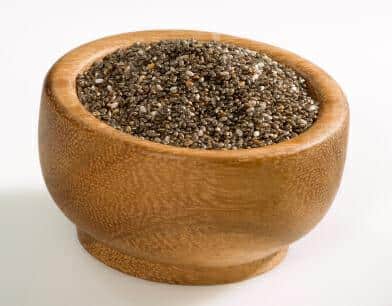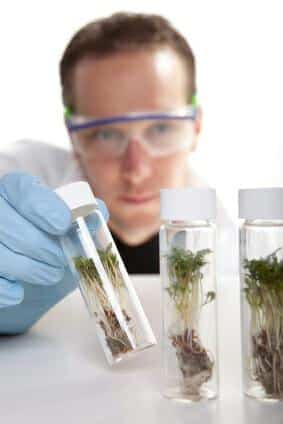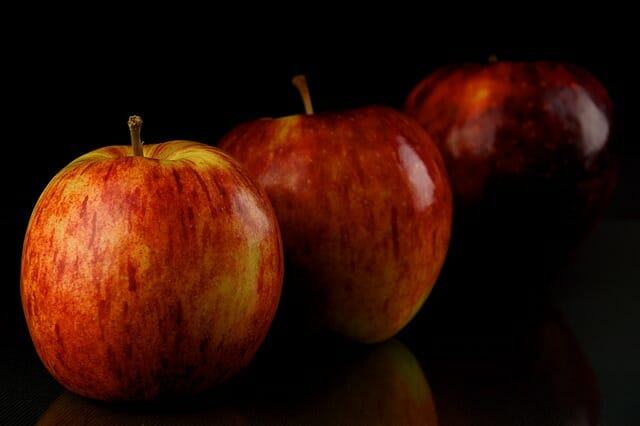Did you have a Chia Pet growing up? Maybe you aren’t as old as I am, but I ordered my very own Chia Pet off the back of a comic book in the late 1970s. I was eleven. I waited with baited breath for my package to arrive, and when it did, I tore into it with all the enthusiasm of a child.
 I followed the instructions to the letter. Every day I came home from school and massaged the head of my Chia Guy, hoping some hair would grow on his head. At the time I had no idea whether it was the water, the head massages, where I placed my Chia Guy, or Chia magic, but it was no gimmick. Unfortunately, at the time it didn’t matter. Beyond the success I felt every time I looked at my Chia Guy (whom I eventually named Thomas), I had no idea if there were some purpose Thomas served other than my being able to brag to my friends and family that he had a full head of green hair.
I followed the instructions to the letter. Every day I came home from school and massaged the head of my Chia Guy, hoping some hair would grow on his head. At the time I had no idea whether it was the water, the head massages, where I placed my Chia Guy, or Chia magic, but it was no gimmick. Unfortunately, at the time it didn’t matter. Beyond the success I felt every time I looked at my Chia Guy (whom I eventually named Thomas), I had no idea if there were some purpose Thomas served other than my being able to brag to my friends and family that he had a full head of green hair.
If I Only Knew Then What I Know Now
Today, Chia Pets are far more than a terracotta head molded in the shape of a guy, a ram, a bunny, an elephant, or the myriad famous cartoon characters that would be (and still are) mass marketed, thanks to an explosion of interest that started in the mid 1980s. Today Chia Pets and more importantly, Chia seeds are so much more than simply a cool conversation starter. However, contrary to what the makers of Chia Pets and myriad health enthusiasts might have us believing, chia seeds are nothing new and they date back many thousands of years.
A Little Background on the Chia
Salvia hispanica (that’s chia to you and me), is a cousin of the perennial herb mint and is jam packed with yummy goodness with nearly limitless uses. Native to Mesoamerica (Mexico and extending into Central America), chia seeds grow best when the temperature is between 25°F and 50°F. For those of you know your hardiness zones well, those are zones 9-12. Identifying chia should be fairly easy. A mature chia stands about three feet tall and its leaves are either purple or white and are broader than they are long.
The earliest known uses of chia seeds and their oils in all likelihood date back to approximately 3500 B.C. with the pre-Columbian (Aztec, Mayan, and Olmec Indians) people not only consuming them, but also using them both as currency and during religious ceremonies.
Unfortunately, when the Spanish conquered the Americas and the Caribbean, along with the people themselves, they barred the continued farming of these seeds.
Understanding the Ancient Wisdom of the Mesoamericans
Chia seeds have quite a few things going for them that make them so sought after. But you won’t find any trials or prospective data that look at the myriad health benefits of the chia seed. They are high in fiber, phosphorus, calcium, and protein, are an antioxidant, and are rich with omega-3 fatty acids. Indeed it is unlikely that the indigenous people sat around their living rooms and chatted about the important roles these played in their health. However, what is likely is that whatever wisdom the elders imparted to younger people was taken as gospel and they not only ate but paid homage to the chia.
Fiber
There are two types of fiber: insoluble and soluble. Insoluble allows food to pass through the digestive tract easily, thus allowing us to have regular bowel movements that are bulky and pain free. Soluble fiber is water-soluble and helps lower HDL cholesterol and blood glucose levels.
In the short term, diets that are rich in fiber reduce the instances of constipation and in the long term may stave off colorectal, stomach and anal cancers. Diets high in protein, as we often see among Americans, tend to lack sufficient fiber.
Protein
Believe it or not, you can get plenty of protein by reducing your intake of meat and replacing it with plenty of seeds and nuts.
Phosphorus
Phosphorus is an important mineral that promotes cellular reproduction. It helps to break down the nutrients in our food, which allows us to absorb them more easily. Ideally, adults should be consuming between 700 and 1000 milligrams a day of phosphorus.
Calcium
One of the first things we learn about nutrition is the importance of calcium for strong teeth and bones. Those whose diets are rich in calcium have fewer broken bones and cavities. Myriad studies have proven the link between diets rich in calcium and the diminished risk of osteoporosis. Calcium needs vitamin D for proper absorption, however, which is why if you are taking a calcium supplement, you will notice vitamin D is added. Men and pre-menopausal women should consume about 1000 milligrams a day and women in menopause should increase this to at least 1200 milligrams.
Add chia seeds to the growing list of foods that fight off free radicals, which can damage healthy cells that fight off cancer, cardiovascular disease, and diabetes. Along with coffee, poultry, fish, fruits and green leafy vegetables, seeds and nuts are wonderful tasting and easy to snack on.
The Amazing “Aztec Super-Food” Used By Top Survivalists For Mission-Critical Strength And Endurance!
Omega-3 Fatty Acids
As you probably know, omega-3 fatty acids are an important part of our diet (or should be) and yet are ones that we cannot produce on our own. For people who aren’t fans of eating fish, such as salmon, chia seeds offer you a great alternative.
Among the myriad health benefits of omega-3s:
- They improve cognitive function in the brain, which also help to boost our memory
- They reduce inflammation
- New studies are linking omega-3 consumption with reducing symptoms associated with two autoimmune diseases:
- Rheumatoid Arthritis
- Lupus
- Adding omega-3s to your diet can improve bone strength and help with calcium absorption, thus reducing the risk and/or severity of osteoporosis. If you are a woman in pre, post or smack damn in the middle of menopause, this is fabulous news.
- They help reduce the risk of cardiovascular disease
- Which includes lowering triglycerides (bad cholesterol) and high blood pressure
- An added benefit to battling heart disease is the maintenance of healthy of blood sugar levels, thus reducing the risk of diabetes mellitus (type II diabetes)
- Many studies suggest that children with Attention Deficit Disorder (with or without the hyperactivity component) lack omega-3 in their diets. Adding omega-3s is said to decrease behavioral problems, and increase focus.
- Omega-3 consumptions appears to reduce the risk of many types of cancers, including:
- Breast
- Colon
- Prostate
- Stomach
They May Be Small, but Chia Seeds are Mighty
An ounce of chia seeds have approximately:
- 140 calories
- Contains 10 grams of fiber
- 4 grams of protein
- 12 grams of carbs
- 9 grams of fat
- 5 grams of omega-3 fatty acids
- 179 milligrams of calcium
- 269 milligrams of phosphorus
Best Ways to Enjoy Chia Seeds
Ask any “foodie” who calls him or herself a follower of the raw diet, live food, who is a vegetarian or even a vegan and they’ll all agree that chia seeds are the best thing since sliced bread or at least since the acai berry. Heralded as something new, they’ll tell you about all the ways to use chia seeds as though they not only discovered chia seeds but ways to use them.
All sarcasm aside, there are some great ways to enjoy chia seeds. Like tofu, chia seeds have a very subtle flavor to them and no discernible smell, which means they offer you all the wonderful benefits without altering the flavor of foods or adding unnecessary calories and fat.
The only three ways that I have consumed chia seeds are in breads, muffins and smoothies. I was astounded to learn just how creative chia seeds lovers are with their recipes. Easily another article, perhaps I will close this one with a link to a website with a few dozen recipes for the mighty chia seeds.
Who knew when I was just 11 years old that I was on the verge of re-rediscovering something so profound? On a quest for something ornamental, like so many young kids fascinated by the chia hair, I had no idea that I could have been partaking in all this goodness all these years?
©2012 Off the Grid News











